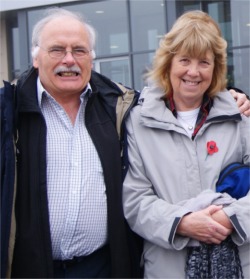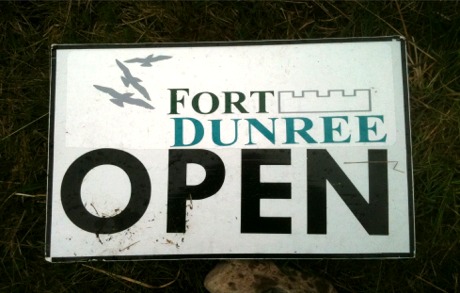|
|
200km Celtic odyssey for missing Dunree
sign
26.05.11
by Linda McGrory
HILLWALKERS exploring the Western Highlands of
Scotland weren't surprised to find a tourist sign
for a local museum. The only problem was - the
museum is in Inishowen.
John and Marie Donohue from Glasgow were walking on
a beach at Knoydart, a remote peninsula near the
Isle of Skye, when they discovered a sign for Fort
Dunree, the military museum near Buncrana, Co
Donegal.
"The sign was lying just above a shingle beach and
there was a stone on top of it, so someone had
obviously come across it before us," said John. |
By coincidence, the
couple had actually visited the museum several years
ago on a trip to Ireland as members of the
Mountaineering Council of Scotland.
"We recognised the sign immediately and realised it
must have blown into the sea at Dunree,” said John.
The avid hill walkers have strong family ties to the
Frosses area of west Donegal where they visit every
year.
They said they wanted to take the sign home to send
it back to the museum but they abided by the
unwritten code surrounding flotsam and jetsam. |
 |
|
John and Marie Donohue from Glasgow. |
|
"There is a sort of
rule that you cannot take anything from the beach
found above the high water mark if someone appears
to have put a claim on it. So we just took a photo
of it instead," he added. The couple, who have two
grown-up sons and three grandsons, decided to send
the photo to Marie’s cousin, John Gallagher, who
lives near Mountcharles, Co Donegal. John then
contacted InishowenNews with the story. |
 |
|
The Fort Dunree sign which was found
in the Western Highlands of Scotland. |
Knoydart lies between
the ports of Mallaig and Kyle and is widely known as
'Britain's last wilderness'.
The missing sign - made of lightweight synthetic
material - had originally been posted at the
entrance gate to the cliff-top museum, about seven
kilometres from Buncrana.
Fort Dunree manager, David Magee, said he was amazed
by the sign's Celtic odyssey from the northerly
shores of Ireland to the western isles of Scotland.
"A few of our signs have blown away in stormy
weather before but we haven't lost any for a couple
of years. I think we'll just have to invest in some
heavier, metal ones now," he quipped. |
|

